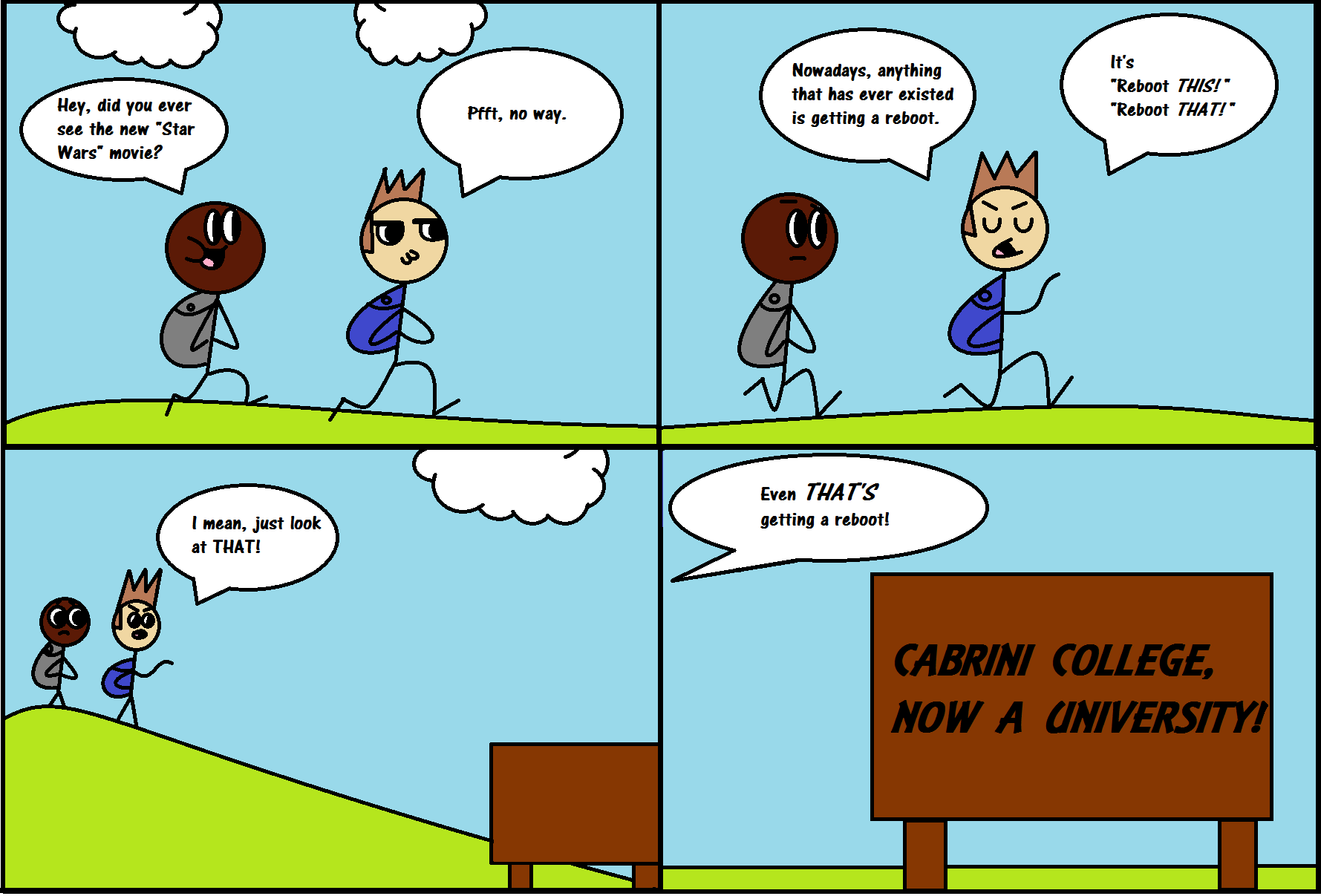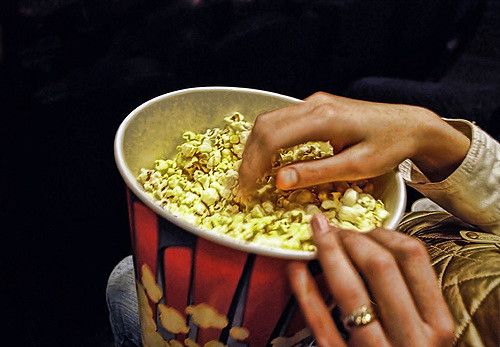
Hey everyone, remember every well-known movie or television show created in the past 30 or 40 years?? Chances are it is either being remade, rebooted or rehashed, or already has been.
In recent years, the film industry, as well as the television industry, have been churning out more and more movies and programs based on previously popular content, whether it is an updated concept, a sequel or a complete retool of the original script.
As time goes on, we are beginning to see less original content and innovative ideas, and more of the same ideas in different formats. The question is, are any of these shows and films worth any value?
Beginning with the film industry, sequels and recreations have existed for well beyond the past decade. Just try and count how many “Friday the 13th” or “A Nightmare on Elm Street” sequels there are.
You could even argue that Walt Disney Studios, one of the largest studios in American cinema, started its success exclusively by adapting fairy tales and fictional novels into animated movies. The issue at hand is not the adaptations themselves, but instead that the ones coming out in recent years seem particularly lazy and uninspired.

Most of these shamelessly poor retools started with adapting Saturday morning cartoons (such as those created by Hanna-Barbera) into live-action films with celebrity actors. This list of films include, but are not limited to “Alvin and the Chipmunks,” “Yogi Bear,” “The Flintstones,” “Garfield” and “The Smurfs.”These films are what I like to consider bottom of the barrel when it comes to children’s entertainment. They rarely stay true to the source material and are riddled with potty jokes that pander to children.
Most people who saw these films would agree as well, as a handful of the movies listed were critically and universally panned. However, that did not stop any of those movies from becoming financial successes.
So why do people insist on seeing these movies when they know they are not going to be very good?
I believe most adults go into these movies knowing they will not be very good, but are drawn in by nostalgia. Yogi Bear and Garfield are two characters that may have had some kind of impact on a middle aged man or woman’s childhood, so they may be more likely to go because they identify with these characters.
As for children, they most likely are drawn in by the silly and wacky computer-generated cartoon characters. Since there is a general sense of condescension from these films, they get away with the idea of just being able to show kids anything, no matter how low in quality.
In terms of quality family entertainment, the aforementioned Walt Disney Studios succeeds in being able to provide both adults and children with entertaining and emotional stories. However, even Disney’s sister studio Pixar has fallen into the trend of unoriginal films.
Pixar has had a huge impact on my life, and some of their films including the “Toy Story” saga, “Up” and “WALL-E” rank among some of my favorite movies in the animation department. It seems as though the company may have run into a creative slump regarding original ideas, unfortunately.
Though we got the wildly successful “Inside Out” last year, most of the studio’s focus the past six years and upcoming four years is mainly on sequels and prequels.
Throughout the 2010s, we have gotten “Toy Story 3,” “Cars 2,” “Monster’s University” and “Finding Dory.” In the next couple of years, we will get “Cars 3,” “Toy Story 4” and “The Incredibles 2.”
While the quality of the movies may vary wildly between the previously mentioned Hanna-Barbera knock-offs, it is clear that Pixar may be struggling to come up with creative ideas for their films.
“Toy Story 4,” “Monster’s University” and “Cars 3” come to mind as movies that not many people really wanted to see, but hey, since all three of those movies were both critically and financially successful and made tons of money in merchandising, why not? People will go see them either way, right?
That is not to say that any of these films are or will be complete duds, but it does strike the question, is the studio more concerned with merchandising and making a profit rather than providing the world with original and fresh concepts?
Disney has been in a relatively similar boat, as live action adaptations of their animated movies have been coming out more frequently as the years go by, including “Alice in Wonderland,” “Maleficent,” “The Jungle Book,” “Cinderella” and “Beauty & the Beast.”
Again, while these films range from very bad to very good, they either do not have to offer a ton of new ideas or messages to separate themselves from the animated films or try such drastic changes that they distance themselves from the original films entirely.
For example, “Maleficent” tries to justify the main villain’s behavior as misunderstood and changed her backstory entirely. While it gives the character more depth, I do not think anyone really wanted to see one of Disney’s greatest villains from a heroic perspective.
Films aimed at children and families have not been the only category to be affected by this streak of seemingly unoriginal or unnecessary continuations. Movies aimed at young teens and adults, such as “The Hangover,” “Horrible Bosses,” “Paul Blart: Mall Cop,” “Ted,” “Dumb & Dumber,” “Meet the Parents” and “Grown-Ups” have all received very lazy and uninspired sequels that were either complete rehashes of the original movie, lacked creativity and ambition, or only existed in order to cash in on the previously successful movies.
In addition to these sequels, several movies have arisen that have rebooted very popular franchises. Some of these have been wildly successful, as well as arguably superior to other films in the franchise, such as “Star Wars: The Force Awakens,” “Jurassic World” and “Mad Max Fury Road.”
Others, however, did not seem to offer anything new to the table.
Even though it had a very talented main cast, the 2016 reboot of “Ghostbusters” did not seem to deliver with audiences. While I do not agree at all with the misogynistic attitudes that have reflected the movie and generally disregarded any of those comments about “Ghostbusters,” I do have to say that simply changing the gender of the main cast does not warrant a very good reason to recreate a once popular movie, and really only appeals to current moviegoers and the female demographic in today’s world.
As for television, while we do not have quite the bombardment of sequels and recreations that Hollywood is responsible for, spin-offs of once popular sitcoms such as “Full House” and “Boys Meets World” have become more popular as of lately. Other sitcoms that were popular in the 90’s like “Saved by the Bell” and “That’s So Raven” also have been announced to have possible spin-offs in the near future.
“Fuller House” and “Girl Meets World” do, however, suffer from the many of the same issues that the films listed above suffer from: they do not seem to offer much outside of nostalgia.
“Full House” and “Boy Meets World” were a product of their time; two corny sitcoms from the 90’s with little character development and a very wholesome cast of characters. “Fuller House” and “Girl Meets World” update a few things, but still stick with the same formula that their predecessors delivered, which ended up making both series seem stuck in a time capsule.
So, what is it that all of these shows in movies have in common? Two things to be exact: nostalgia and marketing.
We all wish we could go back to our younger days when life seemed much more simpler and easier. Sometimes we want to revisit the past, and in this day and age, that gratification can be easily met through various forms of media.
When the trailer came out for the movie “Goosebumps,” teens and adults may have watched it and said, “hey, I remember those books having a positive impact on my life. I wanna check it out!”
I would be lying if I said I did not feel like a child sitting in the theater again during “Star Wars: The Force Awakens.” Seeing those words “A long time ago, in a galaxy far, far away…” gave me a feeling of joy and delight that I had not felt in a long time.
And movies while movies such as “Cars 2” or “Hangover 3” do not necessarily share the same factor of nostalgia that franchises like “Star Wars” or “Jurassic Park.” They do feature characters that are already very identifiable with audiences, so thus they are more likely to see it. Even those Hanna-Barbera reboots, which are almost always hyped up to be awful, are typically likely to do well because they feature already existing characters that many audience members, both children and adults, can identify with.
The problem with nostalgia is that it is becoming the driving factor of why people are going to see movies at this point in time, and a general consensus for Hollywood to churn out more content on existing franchises rather than new and innovative ones.
As I mentioned, this is not to say that a majority of reboots and sequels that have come out in the past year have been bad; in fact, a handful of them have been good! The idea that we are getting less and less fresh and experimental ideas with films, however, is upsetting to see, to say the least.
One of the most ambitious and well put together films I have seen in the past few years was Joel Edgerton’s “The Gift.” It is a delightfully uncomfortable thriller about the dangers of bullying, and while it was financially successful, very few people were actually talking about it.
Do you know why not many people were talking about it? It opened the same weekend as “Fantastic Four” and “Mission Impossible – Rogue Nation.”
That is not to say reboots and sequels should stop happening completely, because if a new idea comes to mind about an interesting route in which to take a series, it should most definitely be acknowledged. However, most of those ideas should be used to reflect new characters and new worlds.
It is so easy to come up with situations and scenarios for a universe that already exists, but so boring when those situations and scenarios cannot flourish into an entirely new medium. A filmmaker’s job is primarily to be innovative and imaginative, and to bring their own vision to life, not the vision of someone else.
While nostalgia is certainly profitable and fun to revisit sometimes, it ultimately does not change the fact that times change and that some ideas are either a product of their time or better left untouched. Like any film, it is important to take inspiration from these past ideas, but not to focus on specifically on the product of your inspiration.
Instead of feeding into the nostalgia of older audience, filmmakers and directors should focus more on the attention of creating films that will someday be nostalgic for younger viewers. Older filmgoers will always have their favorite movies to look back on, and typically remember how much they meant to them then, rather than how they mean to them now.
It is so easy to look back and remember how great things used to be, but instead of focusing on what used to be great, we should instead focus on creating a greater future, full of new ideas and aspiring creations.
And I am sure that one day, these wonderful new films and television shows will end up getting a reboot or spin-off of their own.


